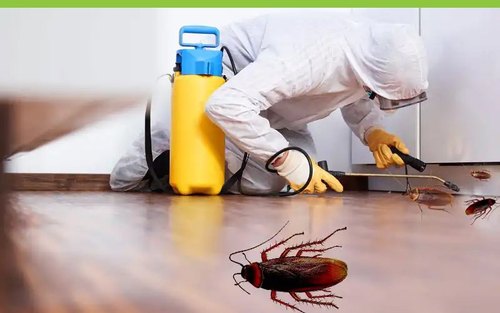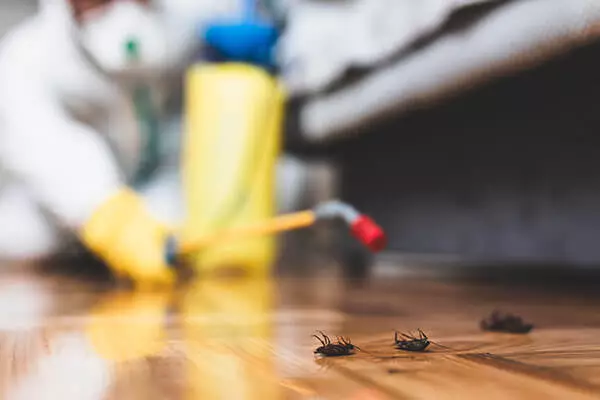Discovering Numerous Bug Control Approaches to Accomplish Long-Term Success in Taking Care Of and Stopping Problems in Suburb
Reliable insect control in houses demands a multifaceted approach that balances immediate outcomes with long-term sustainability. By checking out a series of methodologiesâEUR" including eco-friendly solutions, chemical choices, and Integrated Pest Monitoring (IPM) âEUR" home owners can establish approaches that not only resolve present problems yet also prevent future events. This exploration reveals the potential of cutting-edge practices and emerging modern technologies that may redefine conventional pest monitoring. What might these improvements involve, and just how can they change our understanding of parasite control?
Understanding Insect Control Methods
Although bugs have existed alongside human beings for centuries, the techniques employed to regulate them have evolved significantly with time. Understanding these techniques is essential for effectively taking care of and stopping invasions in residential areas. Bug control strategies can be broadly classified into three key techniques: cultural, mechanical, and chemical.
Cultural approaches focus on altering the environment to lower pest tourist attraction and reproduction. Mechanical control entails physical obstacles and traps to handle insects straight, such as displays, vacuums, and sticky catches.
Chemical control stays one of the most extensively used approaches, involving the application of chemicals to remove insects. Integrated Parasite Administration (IPM) integrates these methods to produce an all natural approach, promoting lasting pest avoidance and very little harm to valuable microorganisms.
Eco-Friendly Bug Control Solutions
How can home owners effectively take care of insect issues while minimizing their environmental impact? Green parasite control remedies provide a lasting option to traditional methods, focusing on the health and wellness of both citizens and the surrounding community. These options typically utilize natural ingredients and strategies that interrupt insect actions without presenting harmful chemicals right into the environment.
One reliable approach is the use of beneficial pests, such as ladybugs and lacewings, which prey on common insects like aphids and mites. Furthermore, diatomaceous earth, a natural powder made from fossilized algae, can be sprinkled in locations where parasites prevail, acting as a desiccant that damages pests while staying risk-free for people and pet dogs.
Furthermore, carrying out preventive procedures is critical. roach control near me. House owners can ensure proper cleanliness by securing entry factors, preserving tidy home, and handling waste properly. Growing pest-repellent natural herbs, such as mint and basil, can also prevent unwanted visitors
Inevitably, environment-friendly bug control remedies equip homeowners to address infestations sensibly, promoting a much safer living environment while advertising eco-friendly balance. By embracing these methods, individuals can add to a healthier earth while properly taking care of pest-related concerns.
Chemical Parasite Control Options
While environment-friendly options are significantly popular, there are scenarios where chemical pest control choices may be required for efficient management of extreme invasions. Chemical controls, including pesticides, fungicides, and herbicides, are frequently utilized to quickly decrease parasite populaces and i loved this alleviate damage to homes and gardens.
These items can be categorized into two primary groups: synthetic chemicals and natural chemicals. Synthetic chemicals, such as pyrethroids and neonicotinoids, are crafted to target details pests, giving quick knockdown impacts. Conversely, natural chemicals, originated from plant or mineral sources, might offer a much more eco-friendly choice while still supplying reliable results.
Before using chemical insect control, it is crucial to perform a complete assessment of the infestation and determine the details parasite included. This makes certain that the selected chemical is both reliable and ideal. In addition, house owners must follow safety and security guidelines, including proper application techniques and individual safety equipment, to lessen wellness risks and environmental impact.
Integrated Pest Administration Methods

Organic control entails using natural predators or bloodsuckers to manage parasite populations. For example, presenting ladybugs can assist manage aphid infestations. Cultural methods, such as crop turning, hygiene, and habitat alteration, objective to make settings much less favorable to pest survival and recreation. Physical controls, like traps or barriers, can protect against bugs from entering homes or damaging crops.
Tracking and evaluation are important elements of IPM, enabling for prompt interventions based on pest populace limits. By focusing on preventative procedures and utilizing a combination of strategies, IPM not just addresses present problems however also fosters lasting bug management options that secure both human health and wellness and the atmosphere. This comprehensive method is essential for sustainable bug control webpage in suburbs.
Emerging Technologies in Insect Control
The advent of arising technologies in pest control is transforming the method we take care of pest populations, offering cutting-edge options that boost performance and performance. Developments in precision farming, for circumstances, make use of information analytics and sensor technologies to keep track of insect activity and environmental conditions, permitting targeted interventions that reduce chemical use.
In addition, drones outfitted with imaging innovation are being used to survey huge locations for infestations, providing real-time information that help in timely decision-making. read this article Additionally, biotechnology is playing an essential function, with the development of genetically changed microorganisms (GMOs) created to reduce bug populaces while maintaining valuable species.

Lastly, clever catches and checking devices equipped with IoT capacities enable property owners and insect control experts to receive instantaneous informs about bug task, assisting in punctual activity. Jointly, these emerging technologies not only improve insect management outcomes yet likewise add to ecological sustainability by minimizing dependence on conventional chemical treatments.

Final Thought
To conclude, efficient insect control demands a multifaceted approach that incorporates social, mechanical, and chemical strategies. Emphasizing green remedies and Integrated Insect Monitoring can result in sustainable methods that not just alleviate problems however also improve the eco-friendly equilibrium within houses. By embracing innovative innovations and adopting preventative actions, home owners can promote healthier atmospheres while reducing dependence on damaging chemicals. The assimilation of these methods is critical for achieving lasting success in pest management.